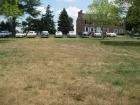|
Re: Valves & seats
|
||||
|---|---|---|---|---|
|
Home away from home
|
I’m not sure I’m following your reasoning as stem seals will always reduce the amount of lubrication and our hence only used on the intake valves where there is a vacuum, pulling oil past the valve stem into the intake.
It sounds like you’re concerned the valves are not getting enough lubrication.
Posted on: Today 11:46
|
|||
|
1955 400 | Registry | Project Blog
1955 Clipper Deluxe | Registry | Project Blog 1955 Clipper Super Panama | Registry Email (Parts/service inquiries only, please. Post all questions on the forum.) service@ultramatic.info |
||||
|
||||
|
Re: Valves & seats
|
||||
|---|---|---|---|---|
|
Home away from home
|
I wold not put valve stems seals on an engine that did not originally have them. I don't recall ever seeing valve stem seals on a flathead engine. They are common on overhead valve designs because too much oil is available due to the need to lubricate the rocker assembly. An OHV engine with worn or missing valve stems seals will often smoke and burn oil even if everything else is on-spec.
***** On older Packard eights, the valves and valve guides are not perpendicular to the cylinder bore center. They are inclined at 15 degrees toward the bore centers. I assume the later engines are the same. Be sure that anyone doing any kind of valve work is aware of this unusual design feature. I would stay away from machining the head unless absolutely necessary. The valve to head clearance is unusually tight in Packards, and rule of thumb may not apply. The 15 degree inclination of the valves must be considered since they do not move straight up and down. If new valve seat inserts are installed, they need to be finish machined so that the valve face is at the correct relation to the both the block deck and to the inclined valve guide bore.
Posted on: Today 12:39
|
|||
|
||||
|
Re: Valves & seats
|
||||
|---|---|---|---|---|
|
Home away from home
|
Valve stems do not move very much in the guides, and they don't move at all much of the time. They can get by with very little oil. Exhaust valves depend on a good tight seat for a large portion of their cooling. A poorly seated exhaust valve will run VERY hot, and far more heat than normal will reach the valve stem and valve guide.
Posted on: Today 12:43
|
|||
|
||||
|
Re: Valves & seats
|
||||
|---|---|---|---|---|
|
Home away from home

|
Quote:
Quote: TxGoat wrote: I wold not put valve stems seals on an engine that did not originally have them. I don't recall ever seeing valve stem seals on a flathead engine. I have also successfully installed valve stem seals on Studebaker Champion flathead sixes. jack vines
Posted on: Today 13:15
|
|||
|
||||
|
Re: Valves & seats
|
||||
|---|---|---|---|---|
|
Home away from home
|
JV
Interesting. You didn't install seals on exhaust valves because not necessary? Won't last? What would be the pros and cons of installing stem seals on the intake valves on my 327? What seals did you use on your Studebaker?
Posted on: Today 14:01
|
|||
|
||||
|
Re: Valves & seats
|
||||
|---|---|---|---|---|
|
Home away from home
|
Quote:
Recall that when the intake stroke occurs and thus the intake valve is open, the piston pulls a partial vacuum, therefore tending to suck oil past the valve stem into the cylinder. The opposite is true for the exhaust, therefore why seals wouldn't be necessary with normal specs. The exhaust valves also run a lot hotter so who knows if a seal would even survive. The are accordingly made of a different metal (Austenitic steel instead of Silichrome or Martensitic) and use different clearances compared to the intake valve. Note "Martensitic" not "Martenistic".
Posted on: Today 14:10
|
|||
|
1955 400 | Registry | Project Blog
1955 Clipper Deluxe | Registry | Project Blog 1955 Clipper Super Panama | Registry Email (Parts/service inquiries only, please. Post all questions on the forum.) service@ultramatic.info |
||||
|
||||
|
Re: Valves & seats
|
||||
|---|---|---|---|---|
|
Home away from home
|
Valve seats can be too wide. Look up original specs and stick with them.
Posted on: Today 14:35
|
|||
|
||||
|
Re: Valves & seats
|
||||
|---|---|---|---|---|
|
Home away from home
|
Quote:
I agree that they are not necessary with normal specs, but valve guides are a wear item so they are always on their way to being out of spec. My question is can valve guide and valve stem wear be slowed by having valve guide seals? The more valve guides wear the harder it is for them to maintain proper lubrication, transfer heat and for valves to seal. The further out of spec they get the faster they will wear. I don't think the valves being made out of different materials would have any bearing on stem seals. The question of seals ability to survive on exhaust valves that close to the head of the valve is a good one. I'm sure there are materials that can survive, but are there valve stem seals made out of that material? Who knows?
Posted on: Today 14:37
|
|||
|
||||
|
Re: Valves & seats
|
||||
|---|---|---|---|---|
|
Home away from home
|
Quote:
Agreed! My engine builder said to aim for .060" on exhaust, which will end up being closer to .070" after lapping and the engine runs for a bit. Intake he said to go a little narrower. Heat transfer is important, but a good seal is important as well, as is air flow, etc.
Posted on: Today 14:45
|
|||
|
||||








